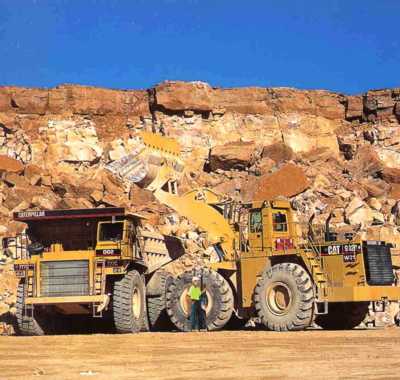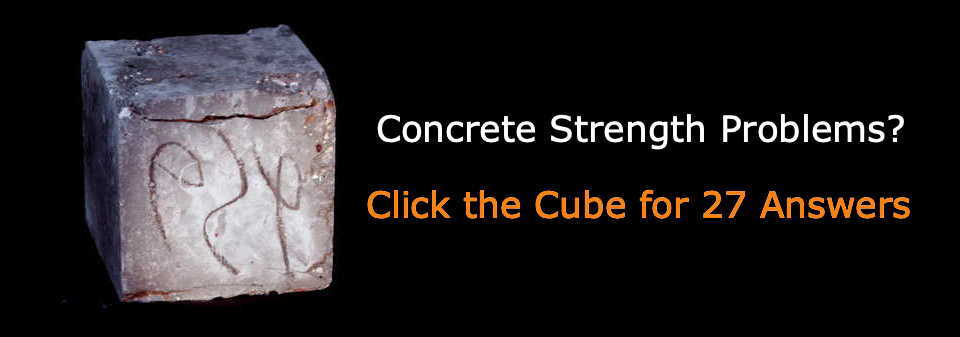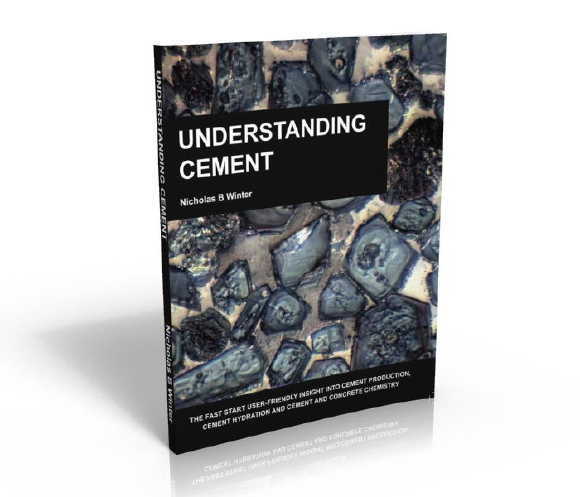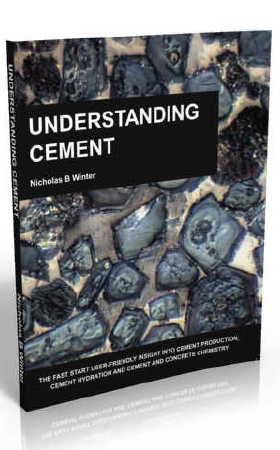Cement manufacturing - raw materials
If you happen to be a geologist, the raw materials quarry is probably
the most interesting part of a cement works, maybe unless you view the
clinkering process as igneous rocks in the making.
The most common raw rock types used in cement production are:
- Limestone (supplies the bulk of the lime)
- Clay, marl or shale (supplies the bulk of the silica, alumina and ferric oxide)
- Other supplementary materials such as sand, fly ash/pulverised fuel ash (PFA), or ironstone to achieve the desired bulk composition
Quarry
management is an art; most quarries will probably have "good material"
from which cement can easily be made. They may also have some material
that is not as good. This might be harder to grind, or be of less
convenient composition.
 Limestone blocks being taken away for crushing. (Picture courtesy Castle Cement.)
Limestone blocks being taken away for crushing. (Picture courtesy Castle Cement.)If the 'good stuff' is all used up first, it may be more difficult to make cement out of what is left. Careful selection on a day-to-day basis is needed to make the best use of all the materials available.
Raw materials are extracted from the quarry, then crushed and ground as necessary to provide a fine material for blending. Most of the material is usually ground finer than 90 microns - the fineness is often expressed in terms of the percentage retained on a 90 micron sieve.
Once the the raw materials are ground fine enough, they are blended in the proportions required to produce clinker of the desired composition.
The blended raw materials are stored in a silo before being fed into the kiln. The silo stores several days' supply of material to provide a buffer against any glitches in the supply of raw material from the quarry.
Technically, a cement producer can have almost complete control over clinker composition by blending raw materials of different compositions to produce the desired result. In practice, however, clinker composition is largely determined by the compositions of the locally-available raw materials which make up the bulk of the raw meal.
Supplementary materials are used to adjust the composition of the raw meal but cost and availability are likely to determine the extent to which they are used. Transport costs in particular become significant in view of the large quantities of materials used in making cement.
Get a Better Understanding of Cement
Articles like this one can provide a lot of useful material. However, reading an article or two is perhaps not the best way to get a clear picture of a complex process like cement production. To get a more complete and integrated understanding of how cement is made, do have a look at the Understanding Cement book or ebook. This easy-to-read and concise book also contains much more detail on concrete chemistry and deleterious processes in concrete compared with the website.
Click here for more information
Check the Article Directory for more articles on this or related topics








